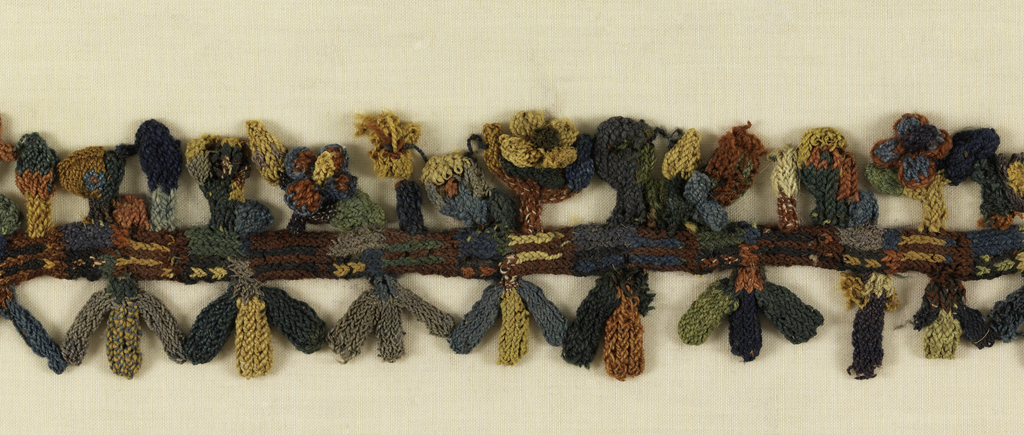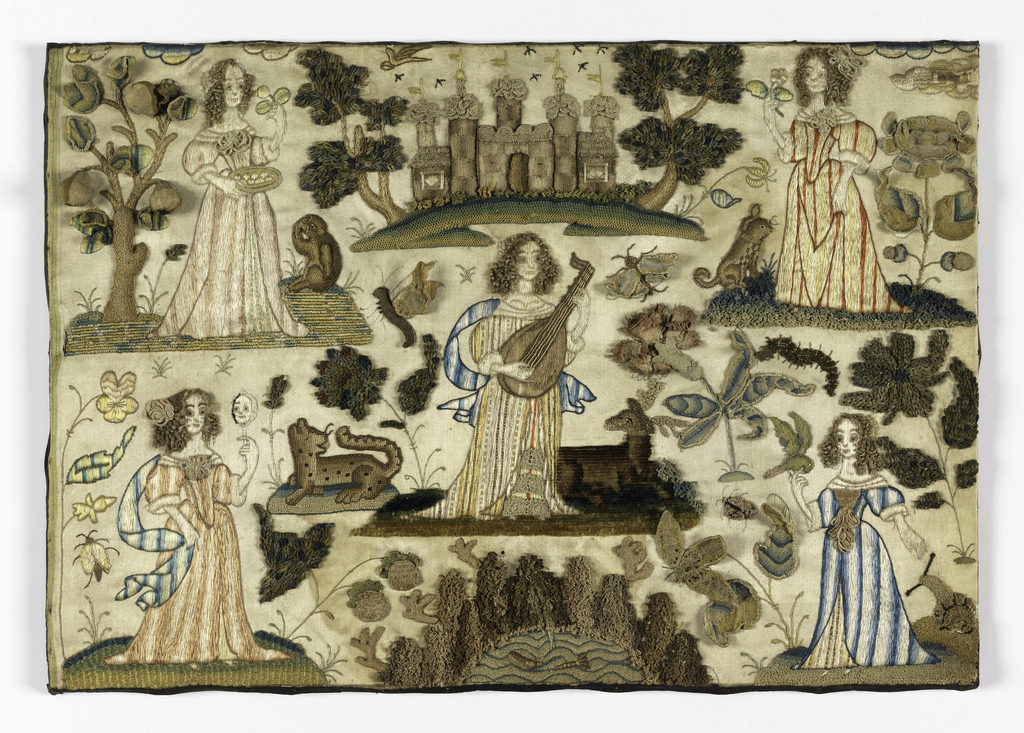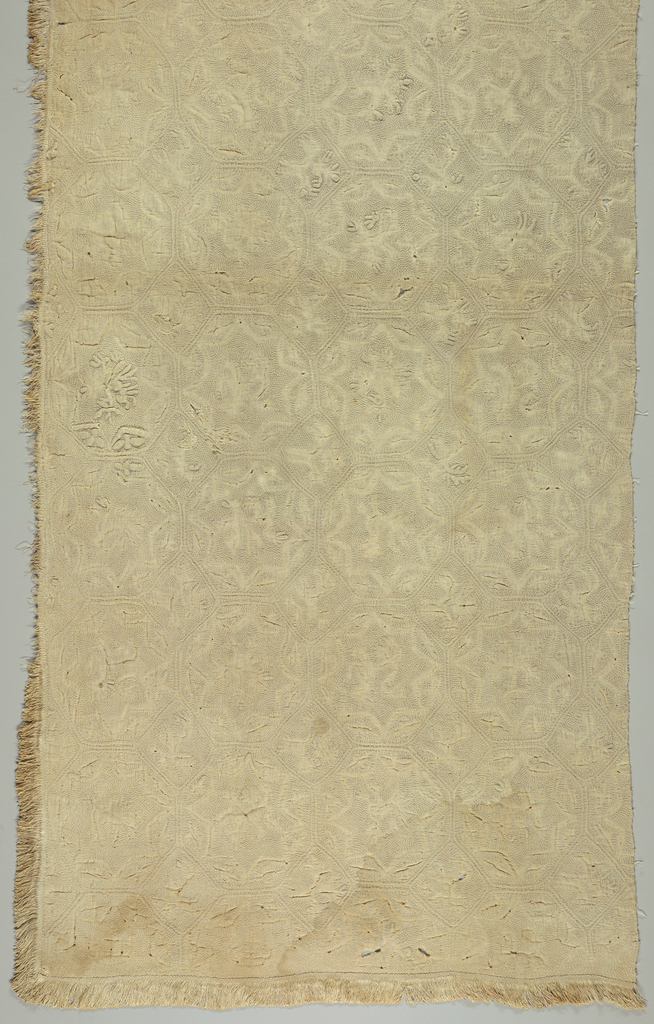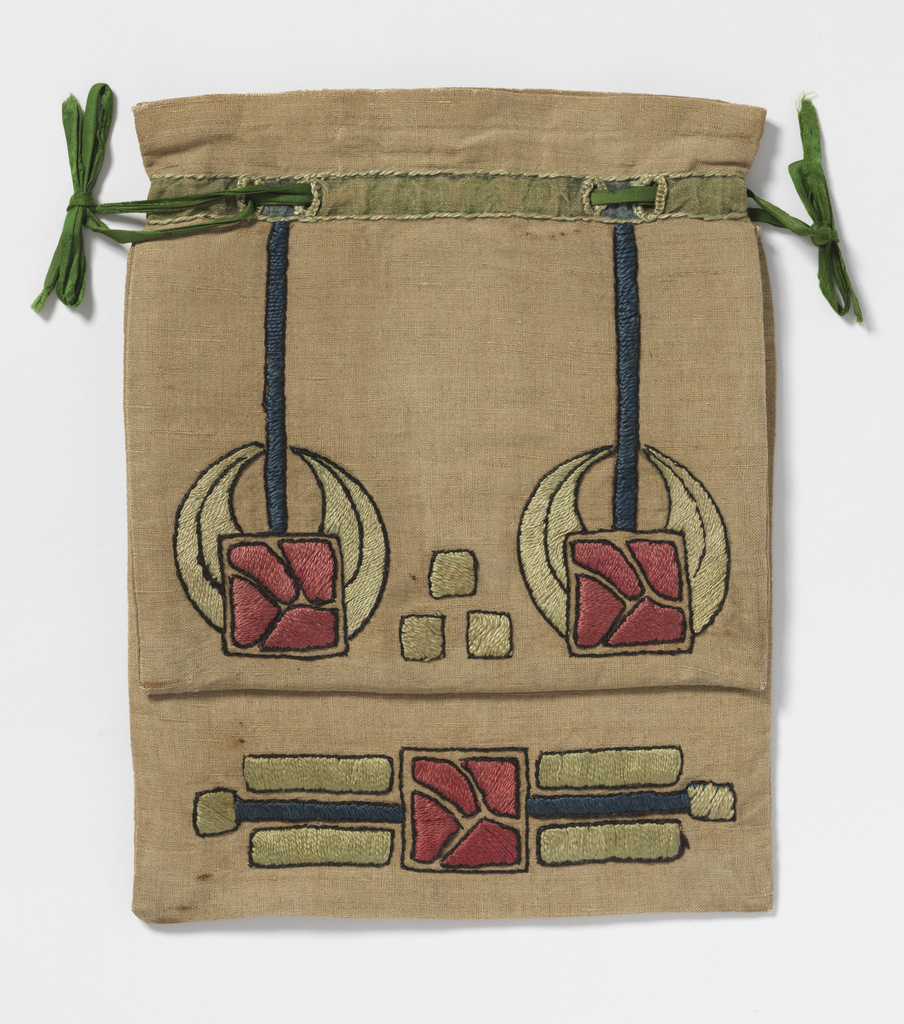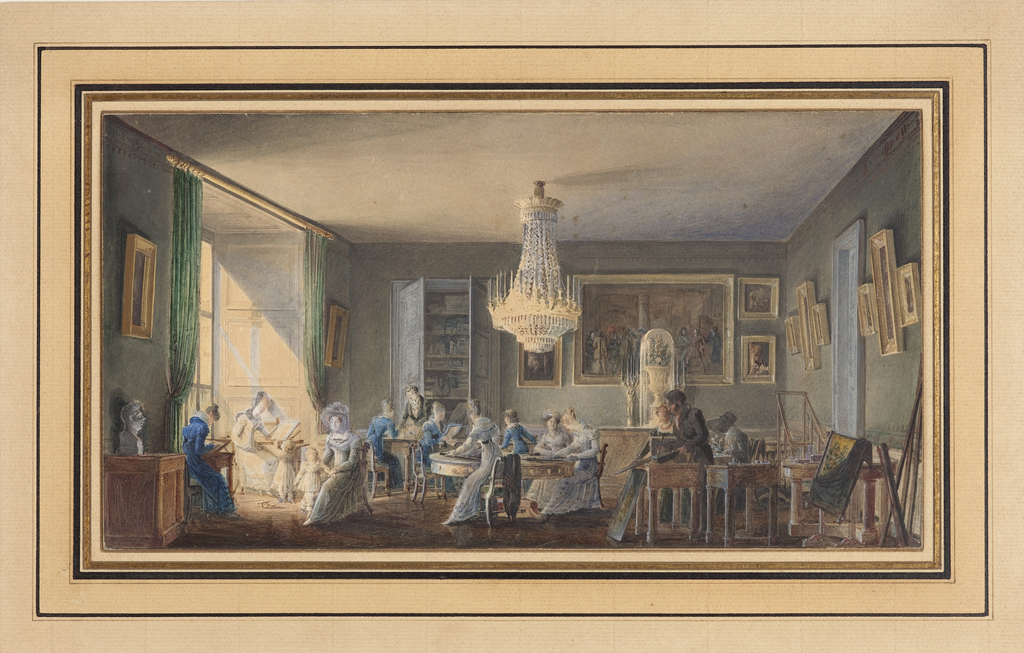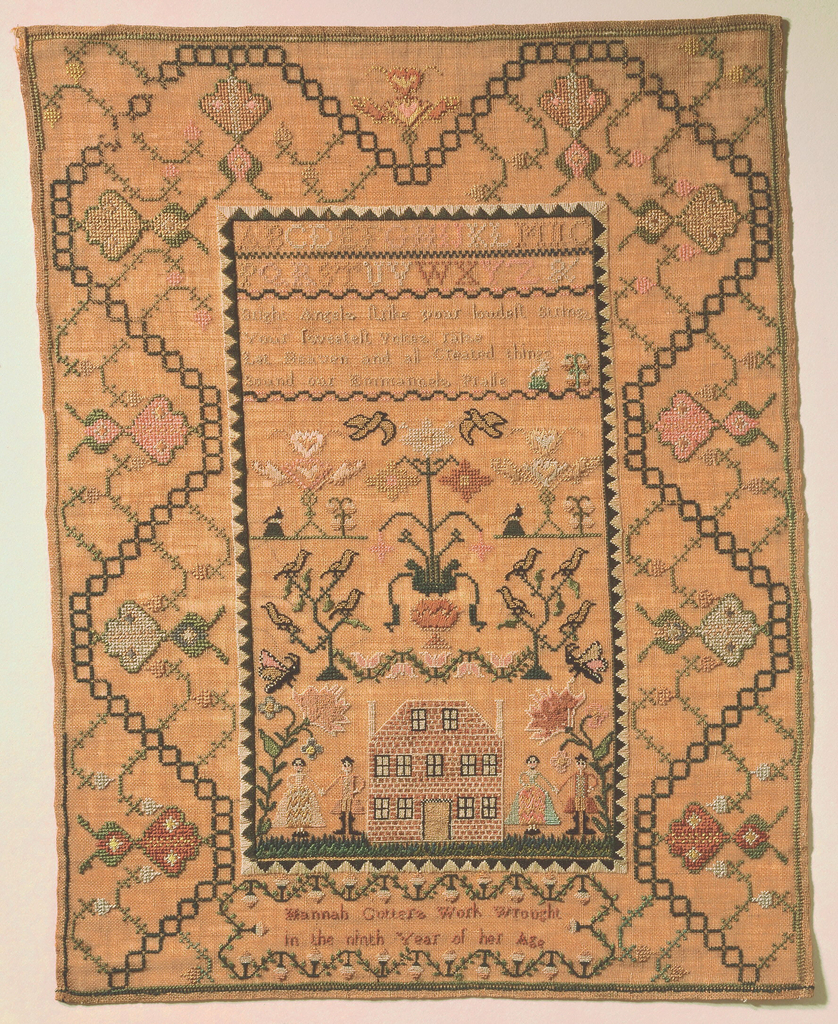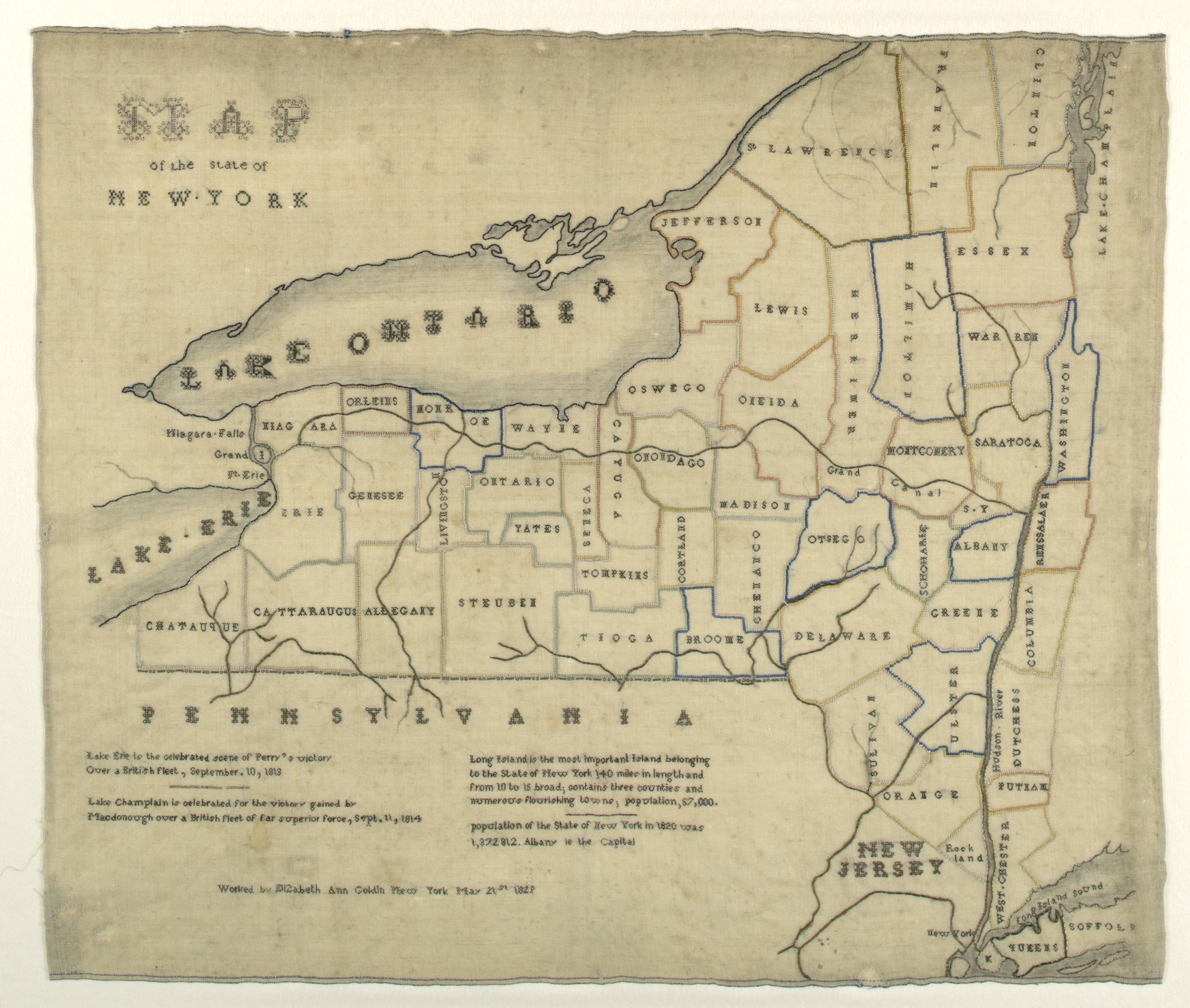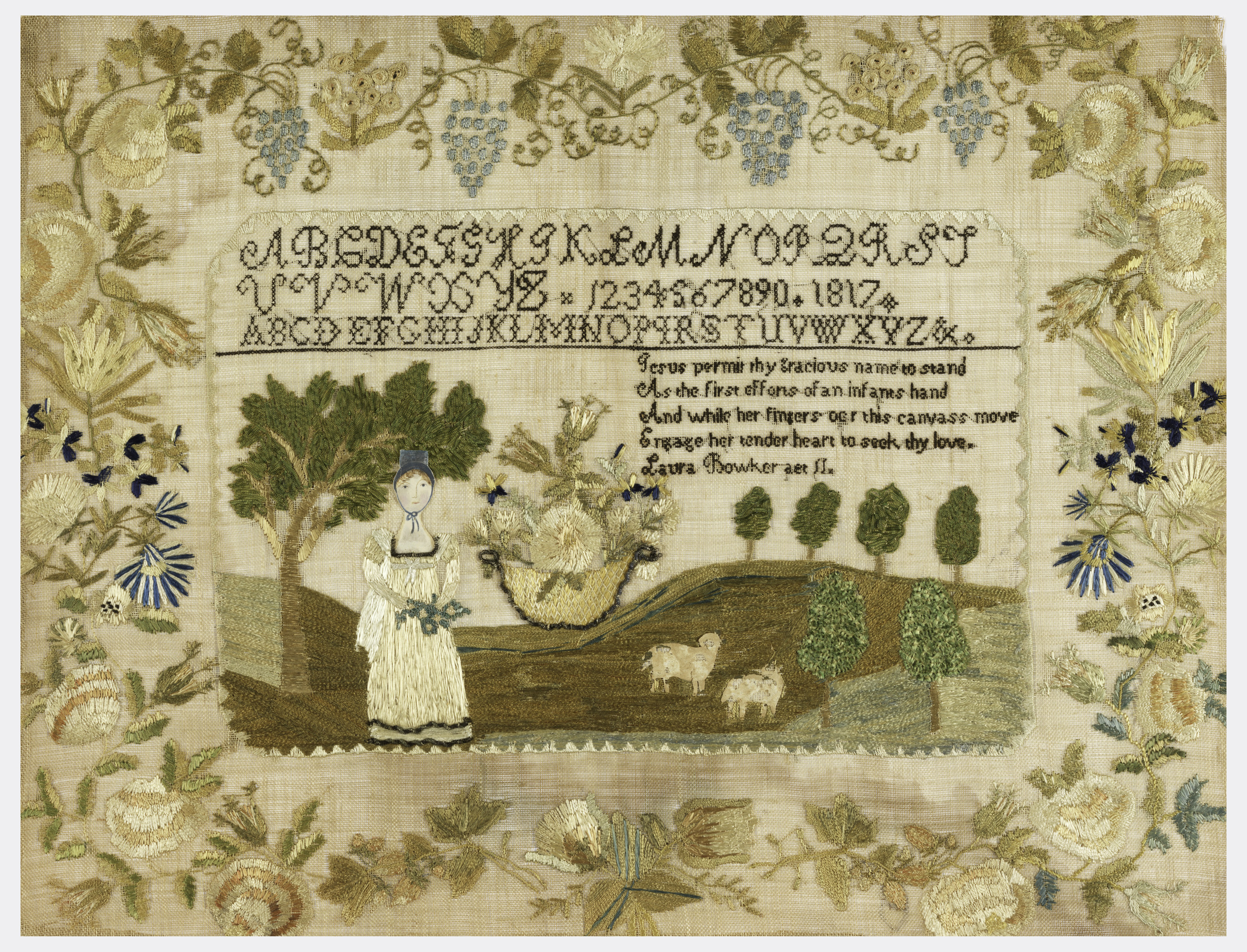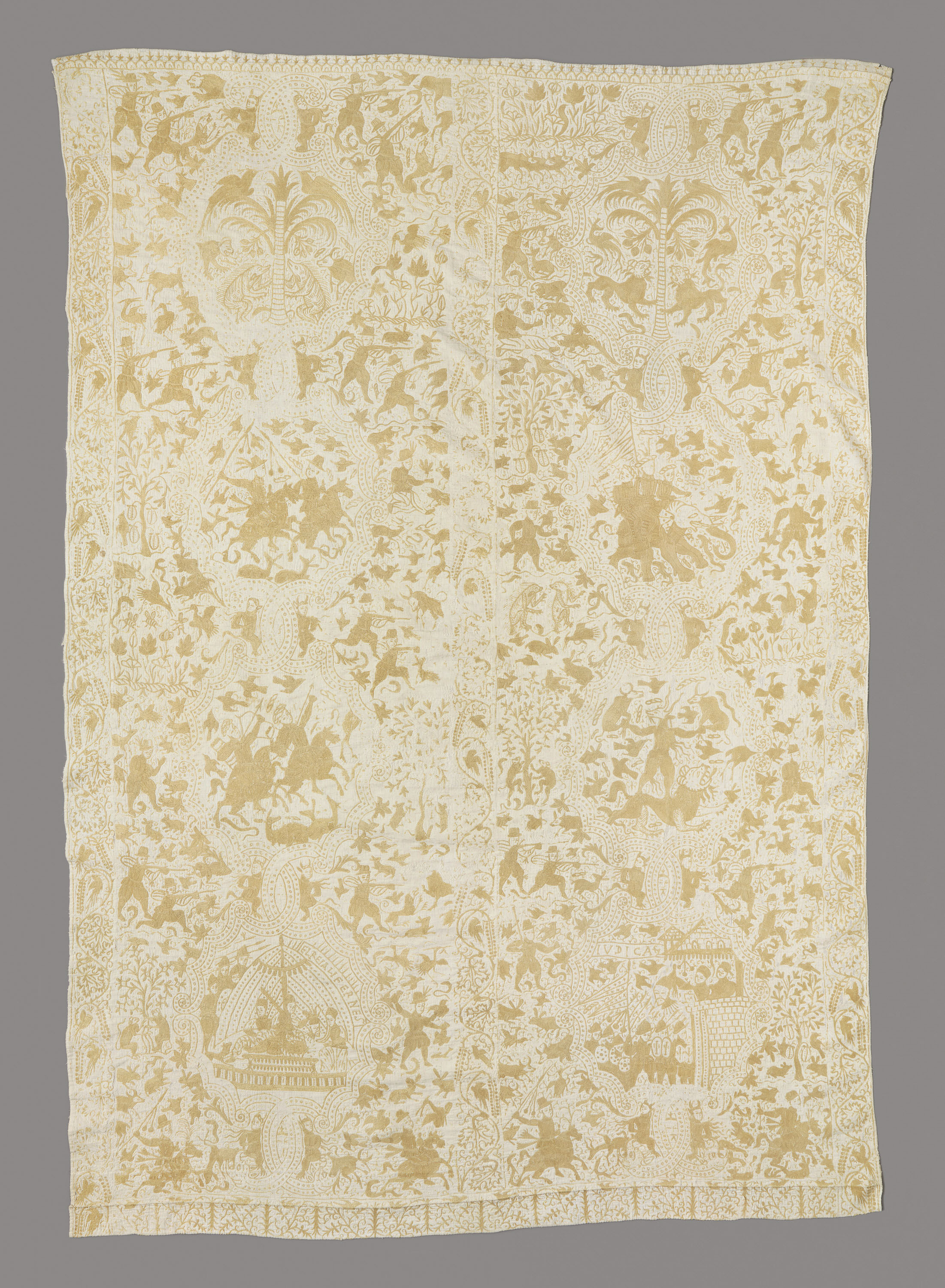During the period from around 100 B.C. to 400 A.D., Nasca needleworkers from the South Coast of Peru mastered the complex art of three-dimensional cross-looping. A number of colorful and complicated border fragments like this one have been preserved. The few garments that remain intact show that they were used as the outer edging attached...
Author: Katherine Diuguid The wealth of needlework techniques on display in 17th century English raised-work embroideries is a reminder that these pictures functioned as samplers, in which amateur embroiderers would test out different techniques as they progressed in their needlework skills. Whether depicting Biblical or mythological characters, female figures rendered in contemporary dress often enjoyed...
Author: Kathryn Berenson Playful birds and beasts parade from left to right across this quilted and corded decorative textile (inv. 1976-68, dimensions 78.5 x 33.5 inches). Each crowned eagle, proud peacock and rooster, amiable lion, flying dragon, and four-legged beast with antlers but no head, appears within an 8-point star set inside a 6-inch-wide octagon....
A work bag or sewing bag was a soft cloth bag used by women to store their embroidery implements and supplies, and small, unfinished projects. The bags were a common feature of feminine life from the 17th through 19th centuries, but by the time this bag was embroidered, in the early 20th century, few women...
This Object of the Day celebrates one of many treasured objects given by Clare and Eugene V. Thaw to Cooper Hewitt, Smithsonian Design Museum. It is republished here in memory of Eugene V. Thaw. Click on this link to read more about the Thaws and their gifts to Cooper Hewitt. Heads down with pencils and brushes...
Hannah Cutter’s sampler is part of a large group of related examples worked from about 1790 until at least 1805 in Boston or nearby towns in Middlesex County. Typical characteristics of these samplers are deeply arcaded borders surrounding a central panel comprising an alphabet, verse, and pictorial elements framed by a saw-tooth border. The pictorial...
Many southwest Chinese ethnic groups, especially the Miao, are known for their spectacular embroidery. Traditionally women’s work, embroidery was a Miao girl’s first attempt at needlework starting as early as four or five years old. Watching their mothers and other women in the community weave and embroider, they would later pass on this knowledge to...
Elizabeth Ann Goldin was fourteen when she embroidered this map of the State of New York. Such map samplers would have provided an excellent opportunity for schoolgirls to display their knowledge of geography as well as their needlework skills. In addition to outlining and naming each New York county, Elizabeth depicts Lakes Erie, Ontario, and...
This sampler, made by Laura Bowker (1805-1843), is part of a small group of pictorial samplers worked by girls from Fitzwilliam, New Hampshire. Each of the charming works features a woman standing in a pastoral setting with trees, rolling hills, a pair of lambs, and an oversized basket of flowers. These bonneted ladies hold bouquets...
Embroidered in Bengal, India for the Portuguese market, this colcha, or bedcover, is a result of the interchange of goods and cultural influence between two trade markets. The style and materials are typical of India, but the universal theme of good triumphing over evil is illustrated through a mix of local and European imagery. Eight...
See how embroidery is made by hand in this short video. Nguyen Le of knitknit demonstrates the basics, including satin stitch, chain stitch and french knot technique. She also adds a backing fabric to the project as an extra optional step. This piece took about 3 hours total. About this series: Design Dictionary is a...
I had the pleasure of meeting recently with Ton Vriens, a Dutch documentary filmmaker and journalist who, through his foundation Turtle Tree, is working with women in Haiti to develop a felt-making co-operative, with the goal of achieving economic and social independence for the members of the self-governed group. Haiti is one of the poorest...
